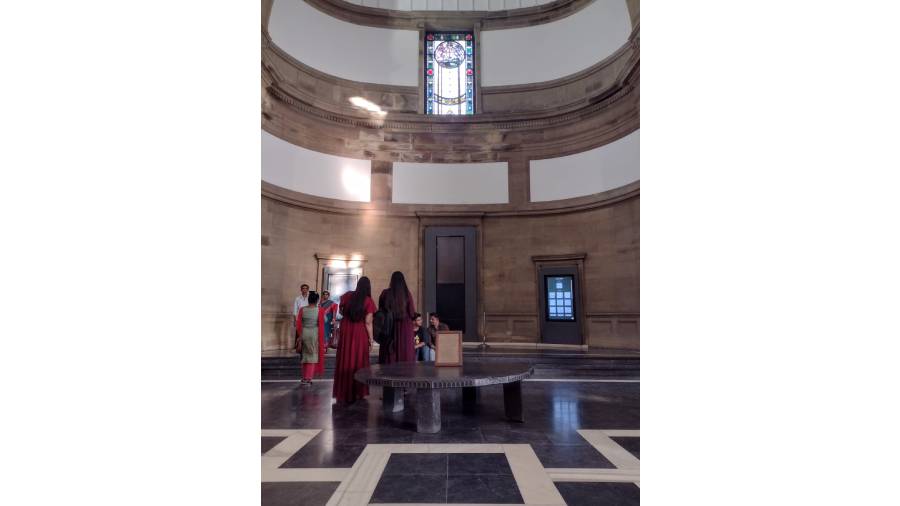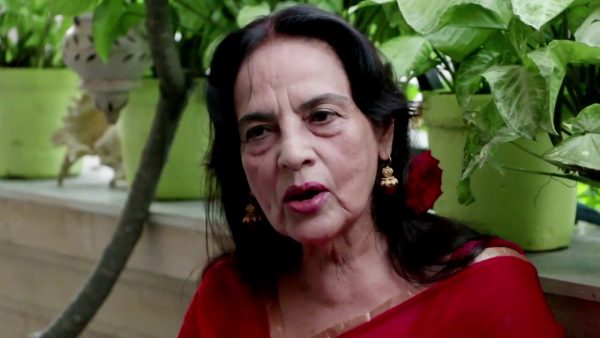BENGAL :
The story of what used to be Bengal’s highest seat of power and of some who braved the ascent

In the circular throne room of Hazarduari, or the palace of a thousand doors, in Murshidabad sits a solid silver chair on a marble platform whose fretwork shows signs of having once been gilded. That intricately carved chair, shaded by an intricately worked silver umbrella, used to be the seat of the nawabs of Bengal.
The maroon velvet cushioned throne, no bigger than a dining chair, might make one wonder how comfortable Siraj ud-Daulah would have been seated on it — after all, it is believed he was nearly seven-feet tall. It most definitely could not have been shared by two as was the black stone throne of Bengal.
In 1766, Robert Clive shared the black stone throne with Najm ud Dowla, second son of Mir Jafar. The East India Company had been granted the dewani of Subah Bangla by the then Mughal emperor. “Clive, as a representative of the company, sat on the throne because he had the right to collect revenue, while the Nawab had the right to dispense justice,” explains Santanu Biswas, amateur historian and Murshidabad resident.
Should you wonder into the Durbar Hall of Calcutta’s Victoria Memorial, you will find a low black table. You might be tempted to put your feet up on it — it is that inconspicuous. But that is it — the erstwhile musnud or throne of Subah Bangla. The throne that was once Shah Shuja’s, son of Shah Jahan; Murshid Quli Khan’s, after whom Murshidabad is named; Alivardi Khan’s, who stopped the Bargi attacks; Siraj ud-Daulah’s, the last independent Nawab of Bengal; the infamous Mir Jafar’s and Clive’s.
The throne is not round but 16-sided; each facet has a simple design inscribed and one of them bears a Persian inscription that declares it was made by “humblest of slaves, Khwajah Nazar of Bokhara” in Munger, Bihar, on November 11, 1641.
How did someone from Bukhara in Uzbekistan end up in Munger? Says Jayanta Sengupta, secretary and curator of Victoria Memorial Hall, “The Mughals were originally from that region. A lot of people came with them. Some kept the place of their origin as part of their name even after having lived in India for generations. It had prestige value.” So, Nazar may never have seen Bukhara.
Back to the musnud. The 18-inch-high platform, six-feet in diameter and sitting on four fat legs, is carved from a single block of black slate from the Kharkpur or Kharagpur Hills. A framed write-up at the memorial states that the throne must have belonged to Sultan Shuja and had originally been kept at Rajmahal (in what is now Jharkhand) before being moved to Dhaka and then Murshidabad (by Murshid Quli Khan) as the capital of Subah Bangla changed.
In Murshidabad too, the throne often changed residence. Mir Jafar, for instance, was enthroned in his palace in Mansurganj, on the western bank of the Bhagirathi, while Clive was enthroned in Motijheel Palace on the eastern bank. It seemed to be the practice for the throne to be moved to wherever the Nawab resided.
The throne is an austere structure. “In India it was always a takht or platform,” says Urvi Mukhopadhyay, associate professor at West Bengal State University. The chair-like throne is a European concept and came later. According to Mukhopadhyay, who is a medieval history expert, the king would always kneel on the throne as it was rude to display his feet.
The throne itself was not made of valuable material, its value derived from the post of the man who sat on it. Says Mukhopadhyay, “It was usually made of stone. You can still see Shah Jahan’s marble throne at the Red Fort, though guides are likely to tell you that it is a platform on which the throne was placed.” There was also a beautifully-embroidered chandoya or canopy over the throne and a richly embroidered screen behind it. The musnud of Murshidabad had four holes in four corners through which the poles that held the canopy were set.
The only readily-available photograph of the black stone musnud shows it in its unadorned state on the terrace before the Moti Mahal of Murshidabad’s Mubarak Manzil. This area was once called Findallbagh after the Briton who developed it.
Mubarak Ali Khan II, better known as Humayun Jah, was the great great grandson of Mir Jafar and the man who built Hazarduari. He bought Findallbagh in 1830 and built the Moti Mahal and the pleasure garden around it that he named Mubarak Manzil. He gave the throne of the Nawab Nazims of Bengal pride of place, but he held court in Hazarduari, on the silver throne that is called the chair of judgement of Humayun Jah.
In The Musnud of Murshidabad (1905), Purna Chandra Majumdar writes, “Drops of reddish liquid issue from certain parts of the stone which when dried up leaves stains, perhaps due to the presence of iron. These are, however, popularly regarded as tears which have flowed ever since the Subadars of Bengal handed the dewani over to the East India Company.”
At the height of their power the nawabs of Bengal sat on a simple platform of black stone, but when they turned puppets of the British their chair of power was solid silver. Perhaps there is a lesson in there somewhere.
source: http://www.telegraphindia.com / The Telegraph Online / Home> Culture / by Paromita Sen / November 28th, 2021









